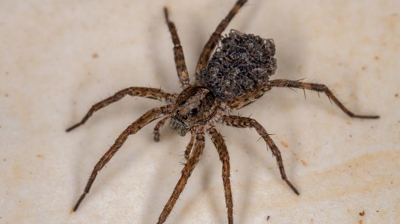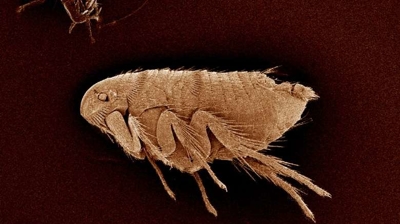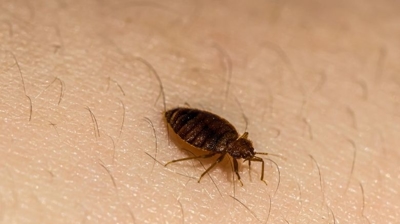
Washington DC Pest Control Services

Washington DC Pest Control Company
Miche Pest Control is a pest control company in Washington DC that provides residential and commercial pest control services in Washington DC and the surrounding areas. Miche Pest Control was started in 2019 by Tom Miche, after he had worked for years as a pest control technician and service manager. Since its formation in 2019, Miche Pest Control has provided high quality pest control, rodent control, mosquito control, and termite control services.
Miche Pest Control has earned a 4.9 star rating with over 1,000 reviews. With service times often available as soon as the same day, you can count on Miche Pest Control. Contact us - get your free quote on the best pest control in Washington DC, and enroll in one of our quarterly pest control plans. Call today!
Washington DC Exterminators
Hiring our professional exterminators in Washington, DC offers a wide range of benefits, particularly given the area's unique climate, high urban density, and variety of pests. Here are some of the advantages:
- Expertise in Local Pest Behavior and Species: Our professional exterminators operating in Washington, DC are highly familiar with the specific pests that are common in the area, including rodents, cockroaches, ants, bed bugs, termites, mosquitoes, and stink bugs. Our localized expertise allows us to quickly identify the pest species, understand their life cycles, and implement the most effective strategies for eradication and long-term control.
- Advanced Inspection and Detection Tools: Our experienced pest control professionals use state-of-the-art tools to detect infestations that may be hidden behind walls, under floors, or within foundations. For example, termite infestations often go undetected by homeowners until significant structural damage occurs. Our professionals utilize moisture meters, thermal imaging, and bait monitoring systems to catch issues early—before they escalate.
- Customized Treatment Plans: Our qualified exterminators don't apply a one-size-fits-all approach. We conduct thorough inspections and develop a treatment plan tailored to your specific property, pest type, and infestation severity. In a city like Washington, DC—where properties vary widely from historic brownstones to modern condos—this level of customization is critical for effective treatment.
- Safe and Environmentally Responsible Practices: Our professional exterminators are trained and licensed to handle hazardous chemicals safely, reducing the risk of exposure to people, pets, and the environment. In Washington, DC, which has strict environmental regulations, working with our team ensures compliance with local laws and use of EPA-approved methods. We provide eco-friendly or integrated pest management (IPM) solutions that balance effectiveness with environmental stewardship.
- Long-Term Prevention: A major advantage of hiring our professionals is access to long-term prevention strategies. Rather than simply treating the visible problem, our experts address root causes such as entry points, moisture issues, and sanitation weaknesses. We may seal cracks, install exclusion barriers, and we provide follow-up visits to ensure pests don’t return. This proactive approach is especially important in DC’s older homes and multifamily buildings where recurring infestations are common.
- Time and Cost Efficiency: While DIY pest control may seem cost-effective initially, it often leads to repeated purchases of over-the-counter products with limited efficacy. Our professionals can resolve the issue more quickly and permanently, often saving homeowners and businesses time, frustration, and money in the long run. Additionally, early intervention can prevent costly structural damage from pests like termites or rodents.
- Health Protection: Certain pests in Washington, DC pose serious health risks. Rodents and cockroaches can spread allergens and disease-causing pathogens. Bed bugs can lead to allergic reactions and mental stress. Mosquitoes can carry West Nile virus. Our professional exterminators mitigate these risks through targeted treatments that reduce pest populations and minimize exposure to health hazards.
- Discreet and Professional Service: We provide discreet, confidential services—especially important for businesses, hotels, or apartment buildings that need to maintain a good reputation. We provide flexible scheduling, and rapid response times to minimize disruption.
- Legal and Regulatory Compliance: For commercial properties, landlords, and hospitality providers in Washington, DC, working with our licensed exterminators ensures compliance with health codes, property management regulations, and tenant safety obligations. Failure to control pests can lead to fines, legal liability, and damage to brand reputation.
Ultimately, hiring our professionals offers peace of mind. You can trust that the infestation will be handled efficiently, safely, and correctly. This is especially valuable in a high-pressure urban environment like Washington, DC, where pest issues can escalate rapidly and affect quality of life, tenant satisfaction, or business operations.
Washington DC Pest Control
Getting our professional pest control in Washington, DC is one of the smartest decisions a homeowner or business owner can make. Pest pressures in the District are unique due to its dense urban setting, older housing stock, humid summers, and proximity to parks and waterways. Here are some of the reasons why our professional pest control is highly beneficial in Washington DC:
- Effective and Lasting Results: DIY sprays and traps often provide only temporary relief. Our professionals use targeted treatments and integrated pest management (IPM) strategies that address the source of infestations and prevent them from coming back.
- Protection from Health Risks: Pests like cockroaches, rodents, mosquitoes, and ticks carry harmful bacteria and diseases such as salmonella, hantavirus, Lyme disease, and West Nile virus. Our professional treatments reduce these risks significantly.
- Safeguarding Property: Termites, carpenter ants, and rodents can cause extensive and costly structural damage. Our professional pest control protects your investment by identifying and eliminating threats before they escalate.
- Local Expertise: Washington, DC has unique pest challenges—including bed bugs in multifamily housing, rats in urban alleys, and mosquitoes thriving in humid summers. Our local professionals know how to address these issues effectively with proven strategies.
- Time and Convenience: Instead of repeatedly buying and applying store-bought products, our professionals handle the problem quickly and thoroughly, saving you time, effort, and frustration.
- Eco-Friendly & Safe Solutions: We use EPA-approved products and advanced techniques that are safe for children, pets, and the environment, unlike some risky over-the-counter chemicals.
- Peace of Mind: Knowing your home or business is protected year-round gives you confidence and comfort, especially in an area where pest problems can spread quickly due to close living spaces.
Our professional pest control in Washington, DC isn’t just about getting rid of pests—it’s about protecting health, property, and quality of life in a city where pest pressures are constant.
Learn more: Washington DC Cockroach Control
Washington DC Residential Pest Control
Much of D.C.’s residential architecture consists of older row houses, brownstones, and historic buildings. Older structures often have cracks, gaps, outdated plumbing, and deteriorated foundations that make them more vulnerable to pests seeking shelter, water, and food. Without regular pest control, these buildings can develop chronic infestations that are costly to remediate.
- Economic and Property Value Considerations: Infestations in D.C. homes can reduce property values and increase repair costs. Termites, carpenter ants, and rodents can damage structural elements, wiring, and insulation. Our professional pest control prevents long-term damage, protecting investments in a competitive real estate market.
- Legislative and Community Standards: Many D.C. neighborhoods have strict housing codes and community regulations regarding pest management. Failure to comply with these standards can result in fines, eviction notices, or forced remediation. Regular pest control ensures homeowners meet these requirements while maintaining safe, habitable conditions.
Once a pest infestation is established in an urban home, elimination becomes more difficult and expensive. Early intervention through preventive pest control minimizes infestations, reduces chemical usage, and ensures long-term peace of mind for residents.
Washington DC Commercial Pest Control
Washington D.C. has strict health and safety regulations, particularly for businesses in food service, hospitality, and healthcare. Restaurants, cafes, grocery stores, and even office buildings are subject to inspections by the D.C. Department of Health. Pest infestations—rodents, cockroaches, flies, or stored product pests—can result in violations, fines, temporary closures, or loss of licenses. Our professional pest control ensures businesses remain compliant with all local and federal health codes.
D.C. is densely populated with mixed-use buildings, row houses, and commercial clusters. Pests can move easily from one property to another, meaning a neighboring building’s infestation can quickly impact your business. Proactive pest control prevents cross-property infestations and mitigates risk associated with the urban environment.
Commercial properties, especially historic buildings common in D.C., are susceptible to pest-related damage. Termites, carpenter ants, and rodents can damage wood, insulation, wiring, and HVAC systems. Preventive treatments protect infrastructure and avoid costly repairs that could disrupt operations.
Pest infestations can force businesses to temporarily close for remediation, particularly in sensitive industries like food service, hospitality, or healthcare. Unplanned closures in a competitive urban market can cause significant revenue loss. Regular pest control ensures uninterrupted operations.
Washington DC Rodent Control
Hiring our professionals for rodent control in Washington, DC is the most effective way to protect your home or business from the serious risks rodents bring. Here are some of the reasons why:
- Rodents pose major health risks. Rats and mice carry diseases like salmonella, hantavirus, and leptospirosis. Their droppings, urine, and dander can contaminate food, surfaces, and even the air you breathe. In a city as dense as DC, infestations can spread quickly from one property to another.
- Our professionals provide targeted, long-term solutions. DIY traps and store-bought baits often only treat part of the problem, while rodents continue nesting out of sight. Our professional exterminators know how to identify entry points, locate nesting areas, and design a comprehensive strategy to eliminate the entire population.
- Rodents cause costly property damage. Mice and rats gnaw constantly, damaging electrical wiring, insulation, and structural materials. In Washington’s older homes and historic buildings, even small damage can lead to expensive repairs—or even fire hazards from chewed wiring.
- Local expertise matters. Rodent behavior varies by environment. In DC, row houses, commercial kitchens, and urban alleys create unique harborage areas. Our local rodent control professionals understand these patterns and applies proven, location-specific strategies.
- Prevention is part of the service. Beyond elimination, our professionals provide exclusion—sealing cracks, gaps, and entry points to keep rodents from coming back. We also give expert recommendations tailored to your property’s vulnerabilities.
- Saves time and stress. Chasing rodents with traps and poisons is frustrating, often ineffective, and can even be dangerous if misused. Hiring our professionals gives you peace of mind knowing the problem is handled safely, efficiently, and thoroughly.
Hiring our professionals for rodent control in Washington, DC not only removes existing infestations but also protects your health, property, and peace of mind long term.
Learn more: Washington DC Mouse Control | Washington DC Rat Control
Washington DC Mosquito Control
Hiring a mosquito exterminator in Washington, D.C. offers many advantages over trying to control mosquitoes yourself. The hot, humid summers and frequent afternoon thunderstorms in Washington DC create an ideal breeding habitat. Even after light rain, many common yard items (bird baths, planters, gutters, tarps) collect enough standing water for mosquitoes to lay eggs. Mosquitoes in D.C. use belowground spaces (basements, underground parking, service tunnels) and other hidden water-holding places as breeding sites. These are often undetected in routine inspections and unaddressed by general homeowner maintenance. Given that, simply using off-the-shelf sprays or eliminating visible standing water may not be sufficient. When you hire our pros, here are some of the benefits you get, which are difficult or expensive to replicate on your own:
- Thorough assessment / site inspection: Our professionals will identify hidden breeding sites (in underground structures, utility conduits, gutters, etc.). We understand local mosquito behavior and the species in the area, so our treatments are targeted.
- Access to more effective treatments: Our professional-grade larvicides and barrier sprays are more durable, longer lasting, and more effective than what most consumers can buy. We schedule treatments seasonally, timed to mosquito lifecycles, to interrupt reproduction cycles.
- Safety and environmental protection: Proper application reduces risk to people, pets, pollinators, and water systems. Our professionals use methods that are less toxic and more eco-friendly while still achieving good control.
- Efficiency & time savings: You don’t have to spend hours reading labels, applying treatments, monitoring the results, re-treating, etc. Our professionals come with guaranteed results and complimentary re-treatments as needed.
- Cost effectiveness over time: Our professionals reduce wasted expenses from DIY methods that don’t fully solve the problem. In addition to that, reducing disease risk, property damage, annoyance, and potentially higher costs later (if mosquito populations get out of control) can offset the investment.
For Washington, D.C., given its climate, risk of disease, hidden breeding grounds, and the challenge of controlling mosquitoes effectively, hiring our professional exterminators is worth it if you want real relief, safety, and long-term results—not just temporary fixes. It’s a protective investment in your health, property, and quality of life.
Washington DC Flea Control
Washington D.C. has a significant number of pet owners living in apartments, townhomes, and densely populated neighborhoods. High concentrations of dogs and cats increase the likelihood of flea infestations spreading rapidly, as fleas easily move between hosts in close quarters.
- Humid Summer Climate: D.C.’s hot and humid summers create ideal conditions for flea development. Fleas thrive in warm, moist environments, and the combination of heat and humidity accelerates their life cycle, leading to faster population growth and higher infestation risks.
- Urban Wildlife Presence: Even in an urban environment like D.C., wildlife such as raccoons, squirrels, and feral cats are common in parks, green spaces, and residential areas. These animals can carry fleas, which may then transfer to domestic pets and homes.
- Human Health Concerns: Fleas in D.C. pose not only a risk to pets but also to humans. Fleas can transmit diseases such as murine typhus, cat scratch disease, and tapeworms, particularly in households with children or immunocompromised individuals. Controlling fleas reduces these potential health threats.
- Impact on Property: Fleas reproduce in carpets, upholstery, and bedding, which are abundant in urban homes and apartments. Infestations can be difficult to eliminate without our professional treatment, leading to repeated cleaning costs and potential property damage.
- Resistance and Infestation Persistence: Urban environments like D.C. often see repeated flea infestations due to resistance to over-the-counter treatments. Without comprehensive control—including pets, indoor environments, and outdoor spaces—fleas can persist and re-infest homes quickly.
- Regulatory and Community Implications: Certain multi-unit dwellings and rental properties in D.C. may have strict pest control policies. Failing to manage fleas can result in tenant complaints, health code violations, and reputational damage for property managers or landlords.
Flea populations in D.C. generally peak during late spring through early fall. Preventive control during early warm months is critical to avoid heavy infestations that are harder and more costly to eradicate.
Washington DC Termite Inspections
Termite inspections are particularly important in Washington, D.C. for several reasons:
- High Termite Activity Zone: Washington, D.C. lies in a region where subterranean termites are especially active. The area’s climate—hot, humid summers and relatively mild winters—creates ideal conditions for termites to thrive year-round. Without regular inspections, infestations can go unnoticed until they’ve already caused serious structural damage.
- Prevalence of Older and Historic Buildings: D.C. is home to many historic row houses, townhomes, and landmark properties. Older construction often uses wood materials that termites target, and hidden damage can compromise the safety and value of these structures. Regular inspections are critical to protecting the integrity of historic properties.
- Hidden Nature of Termite Damage: Termites eat wood from the inside out, and infestations often remain invisible until the damage is severe. Our professional inspections use tools, training, and experience to identify subtle warning signs that homeowners may miss, such as mud tubes, hollow-sounding wood, or moisture issues.
- Cost-Effective Protection: The cost of a professional termite inspection is minimal compared to the potential expense of termite repairs. In D.C., where property values are high, unnoticed termite damage can quickly turn into tens of thousands of dollars in repairs, not to mention a reduced resale value.
- Peace of Mind for Buyers and Owners: In Washington DC’s competitive real estate market, termite inspections are often required during property transactions. They provide buyers with assurance that a home is structurally sound and free from active infestations, and they protect sellers from liability by uncovering problems before closing.
- Prevention of Future Infestations: Inspections don’t just identify current termite activity—they also reveal conditions that make a property vulnerable, such as wood-to-soil contact, moisture issues, or cracks in the foundation. Correcting these conditions early can prevent costly infestations.
In Washington, D.C., where termite pressure is high and properties are valuable—many of them historic—our regular termite inspections are a vital safeguard to protect structural integrity, maintain property value, and avoid expensive surprises.
Washington DC Termite Control
Hiring our professionals to get rid of termites in Washington DC is one of the most important steps you can take to protect your home or business. Termites are highly destructive pests that can cause extensive structural damage before you even realize there’s a problem. Here are some of the reasons professional termite control is essential:
- Accurate Identification & Inspection: Termites are often mistaken for ants or other pests, and their damage is usually hidden behind walls, under floors, or in crawl spaces. Our professionals have the training, experience, and tools to correctly identify termite activity and assess the extent of the infestation.
- Proven & Targeted Treatments: Over-the-counter sprays and DIY methods are generally ineffective against termite colonies. Our professionals use advanced products like specialized liquid termiticides and termite baiting systems that are scientifically designed to eliminate the colony at its source, not just treat the visible signs.
- Preventing Costly Structural Damage: Termites in DC can be particularly damaging because of the city’s many older homes and historic structures. Our professional exterminators can stop termites before they compromise the structural integrity of your property, saving you tens of thousands of dollars in potential repair costs.
- Local Knowledge of Termite Behavior: DC’s humid summers, variable winters, and urban environment create ideal conditions for subterranean termites—by far the most prevalent and destructive species in the region. Our professionals understand local termite patterns and apply the right treatment strategies specific to Washington DC homes.
- Long-Term Protection & Monitoring: Professional termite control doesn’t stop after one treatment. Our licensed exterminators offer ongoing monitoring and preventative plans to ensure termites don’t return. This gives you peace of mind that your property remains protected year after year.
- Compliance & Safety: Our professionals apply termite treatments safely, using methods approved by the EPA. We know how to handle chemicals properly, protecting your family, pets, and the environment, while still ensuring effective results.
- Backed by Warranty: Our professional termite services come with a warranty or service agreement. This means that if termites return, we will re-treat at no additional cost, giving you added security and financial protection.
Termites are not a pest you can afford to gamble with. In Washington DC, hiring our professional exterminators ensures thorough elimination, prevents costly damage, and provides long-term protection for one of your most valuable assets—your property.
Washington DC Bed Bug Control
Hiring our professional bed bug exterminators for your Washington, DC home or business is essential because bed bugs are notoriously difficult pests to eliminate without expert help. These insects are small, resilient, and excellent at hiding in cracks, crevices, mattresses, furniture, and even behind walls. A do-it-yourself approach often fails because store-bought sprays and home remedies cannot penetrate the hidden areas where bed bugs nest or destroy their eggs, leading to recurring infestations.
Our licensed exterminators bring specialized knowledge, professional-grade treatments, and proven strategies that eradicate bed bugs at every stage of their life cycle. In Washington, DC, where apartments, row houses, offices, and hospitality businesses are closely connected, infestations can spread rapidly between units, making professional containment and elimination crucial. Our exterminators also tailor our treatments to the unique needs of your property, ensuring both safety and effectiveness.
Beyond eliminating the infestation, our professional bed bug exterminators provide ongoing monitoring and prevention strategies, which are especially important for businesses in hospitality, healthcare, or multi-family housing. Quick, professional intervention protects your property value, prevents damage to your reputation, and restores peace of mind by ensuring that the infestation is handled thoroughly and discreetly.
Washington DC Wildlife Control
Hiring our professional wildlife control in Washington, D.C. is crucial because the region’s dense urban layout, historic architecture, and proximity to natural areas like Rock Creek Park and the Potomac River make it a hotspot for nuisance wildlife activity. From raccoons and squirrels to bats, groundhogs, and birds, local wildlife frequently infiltrate homes and businesses through chimneys, attics, and crawl spaces in search of food and shelter.
Our professional wildlife control technicians understand the unique environmental and regulatory factors that apply to the D.C. area. We're trained to handle native species humanely and in compliance with federal and District wildlife laws, ensuring that removal and exclusion are both effective and legally sound. Our licensed professionals also recognize that many D.C. properties—especially older rowhouses and government buildings—require specialized exclusion methods that prevent re-entry without damaging historic structures.
Moreover, our professionals have access to advanced equipment and exclusion materials that most property owners don’t. We can identify entry points that are easy to miss, sanitize contaminated areas safely, and implement long-term prevention strategies to stop future infestations. This not only protects the structure from damage but also safeguards occupants from health hazards like histoplasmosis, rabies, or parasite transmission associated with wildlife droppings and nesting.
Ultimately, our professional wildlife control in Washington, D.C. offers peace of mind—ensuring the problem is handled efficiently, humanely, and permanently, while preserving the safety, integrity, and value of your property.
Washington DC Bird Control
Washington DC hosts a high density of historic buildings, monuments, and government facilities, making bird infestations particularly damaging; birds like pigeons and starlings can cause structural damage, corrosion, and soiling with their droppings.
Bird droppings also carry pathogens such as histoplasmosis and cryptococcosis, posing significant public health risks in crowded urban and tourist areas.
Effective bird control preserves the aesthetic and functional integrity of public spaces, protecting landmarks and infrastructure from long-term deterioration. Washington DC’s regulatory environment also requires humane and legal bird management practices, making our professional control essential to balance safety, health, and conservation concerns.

Hear From Our Happy Customers
-
"Very Knowledgeable"
The tech that arrived was courteous, professional, and very knowledgeable. He was Great.
- Uerial I. -
"Professional & Considerate"
I’m pleased with Miche services. Jarvis came today. Professional and considerate. Thank you!
- Judy B. -
"Fantastic & Patient"
Jarvis was fantastic and patient. He answered my questions with an in-depth explanation and addressed all of my areas of concern. Would love for him to be my assigned tech going forward. Well done!
- Yonnette M. -
"Wonderful Service"
Wonderful service. Jarvis is great. Took care of everything I needed. Thank you!
- Henry P. -
"Exceeds Expectations"
I can’t say enough positive things about this company... The tech that came out, Jarvis went above and beyond my expectations. Thank you guys, I will continue using your services.
- Jake M. -
"Great Communication"
Tech was on time, communication was great, and he accommodated my needs.
- Alonzo W.



